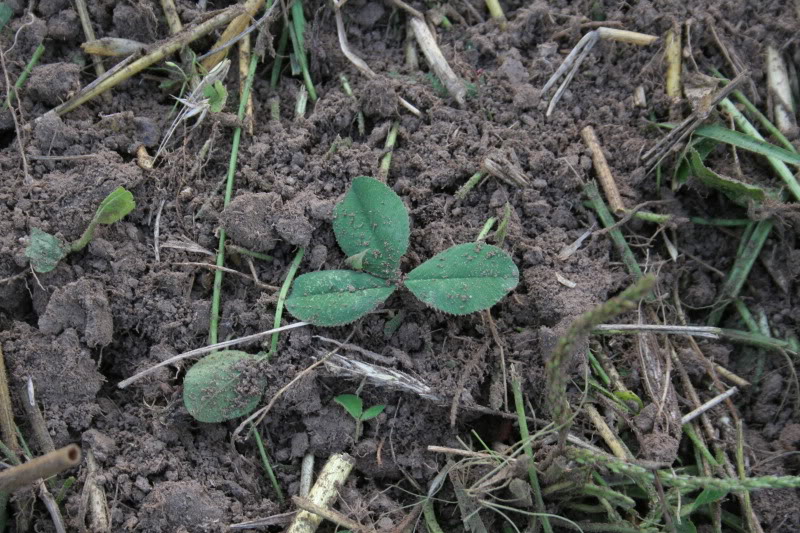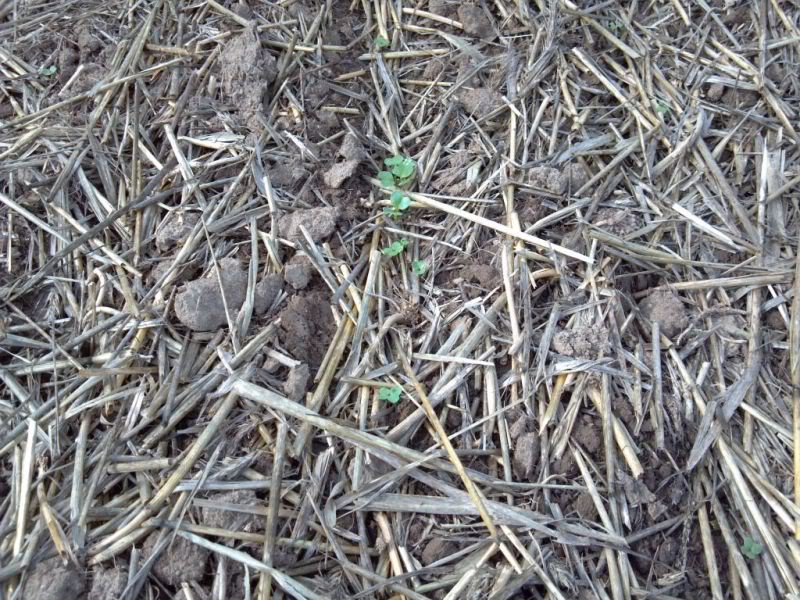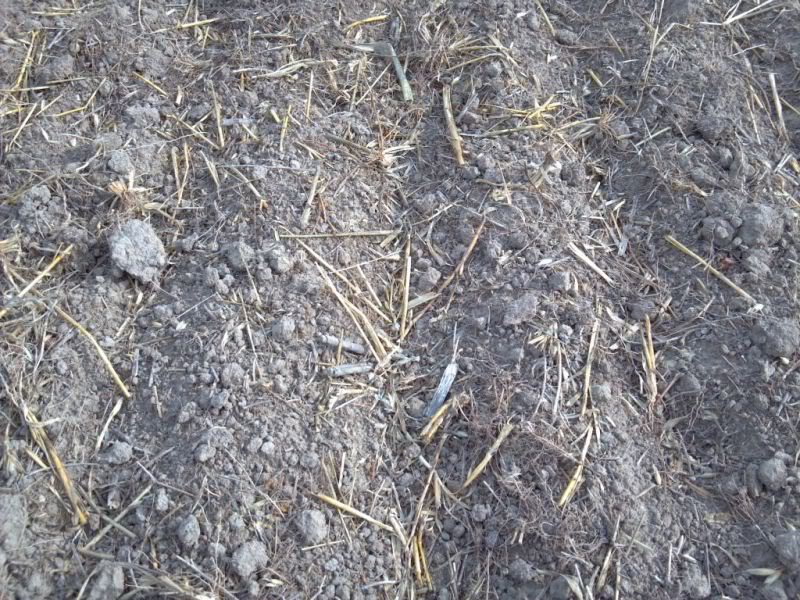July 30th, 2012
In 2011 we had a wet spring then not a drop of rain from June 26th to August 30th and on first time fields that had been in a corn/soybean rotation for decades...not a single brassica seed germinated. On fields that I had been planting a rye/red clover and brassica rotation for a number of years...the results were very different and seemed nothing short of amazing!
Tons of lush forage!
Huge radish roots
and giant turnips...
that all started with tilling under a beautiful mass of winter rye and red clover...rich in organic matter and nutrients
Now a number of people have asked...
How long can brassica seed lay in the soil and be ok?
The seed that did not germinate laid in the soil for 2 full months and germinated when we got a 2" rain so on that subject it can lay there in some cases til spring if the soils are extremely dry.
Now....here we are in 2012 and all of those fields that I planted rye and red clover were tilled under for brassicas. In some cases where rye was overseeded into soybeans, there was no red clover. We are right smack in the middle of one of the largest (by area) droughts since they have kept the Palmer Drought Index and it gets worse by the day
and....to make matters worse there is no end in sight until at least October...
Discouraging yes, but....the results of brassicas following rye with no rain at all last year show what is possible and that leads us to this summer and comparing brassicas planted on fields with rye and no rye and noting the comparison between the two regarding germination.
Note...the following fields have had 2 light rains since planting, and will note that in each comparison.
This field was soybeans last year, over seeded with winter rye (cereal rye/field rye/fall rye grain...all the same) but I killed one small strip with tillage in the spring so i could test my new drill in both standing rye and tilled soil...the strip stands out like a sore thumb now as a "dry strip".... this field has had two rains , .500 on July 26th, .500 on July 29th (planted July 18th)
All brassicas in the fields here were all planted the same, day, same way (with Great Plains drill), same fertilizer rates etc.) and the strip with no rye has also...no germination
Where the rye was allowed to grow and left standing until tilled under to plant....the soil is moist and seeds are starting to germinate.
In field two...it received .200 on July 26th and .500 on July 29th and areas with heavy rye straw on surface have brassicas popping up
Note that all of these fields I mowed/shredded the rye straw and clovers if any and then ran a cultimulcher over them so the rye straw is chopped and left primarily on the surface
areas where there was little rye...have no germination
areas where the straw is so heavy I wondered if seed could come up thru it...are definitely the best!
Digging down a short way shows the thick mat of rye straw and plentiful moisture in and below it
areas of poor clay subsoil as of yet do not have germination...they may, but thus far have not simply because of very low organic matter levels
Field 3...Same as field one...two 1/2" rains 3 days apart and this field i shared pics of earlier, noting the great moisture where I tilled under the rye but complete lack of it where the oats were. This pic is of the area that will be rye this fall after mowing recently
The parallel strip of brassicas that includes 1/2 tilled rye and half tilled oats
Again...same story...great brassica germination in the rye
probably the best of any fields i have looked at thus far
but on the oat side...nothing, not a single seed has germinated..same field, same soil, same planting...only feet apart, only difference is no rye was grown there.
The advantages of planting winter rye then should be clearly obvious and the videos and links shared in the cereal grain thread show the many outstanding benefits of growing winter rye and why farmers across the nation are utilizing this great cover crop to feed livestock and build soils at the same time...just as we can do with whitetails.
In every field on every farm you will see the same thing....strips of crops ...brassicas planted in mid July and oats and annual clovers that will be tilled under for the rye mix in late August.
Rotating brassicas and the rye mix every year, in one central feeding area allows me to have year around food sources and never have a "dirt plot" that sends deer elsewhere. It also allows me to use tremendous tools like cereal rye, forage radish, red clover, winter peas, turnips and crimson clover....to provide build up soils that won't let me down during severe drought years like 2012.
All the fancy seed marketing hype goes out the window when their seeds won't grow or burn up and die...as for me, I'll stick with common seeds planted properly at the right time and in a rotation that keeps weeds, pests and disease at bay....
Plant ALL in one plot in strips or blocks
Alice, Kopu II, Durana (or comparable) white clover 10% of plot, sow at 6#'s per acre with the rye combination in the fall or in the spring with oats and berseem clover. Correct Ph and P&K with soil tests
Brassicas in 45% of plot
Purple Top Turnips 3#
Dwarf Essex Rape 2#
GroundHog Forage radish 5#
Plant in mid to late July in most Midwest states, or 60-90 days before your first killing frost, Use 200#'s of 46-0-0 urea and 400#'s of 6-28-28 per acre. Follow the dead brassicas with oats and berseem or crimson clover in mid spring at 60#'s oats and 12-15#'s berseem clover and/or 50#'s of chickling vetch)
Cereal Grain combo in 45% of plot
Winter rye 50-80#'s per acre (56#'s = a bushel)
Spring oats 80-120#'s per acre (32#'s = a bushel)
Austrian Winter Peas or 4010/6040 Forage peas 20-80#'s per acre
Red Clover 8-12#'s per acre or white clover at 6#'s per acre (or 20-40 pounds hairy vetch and 20-30#'s crimson clover on sandy soils)
Groundhog Forage Radish 5#'s per acre
Plant in late August to early September, if following well fertilized brassicas use 100 - 200#'s of urea, if starting a new plot add 400#'s of 6-28-28
Rotate the brassicas and rye combo each year


































